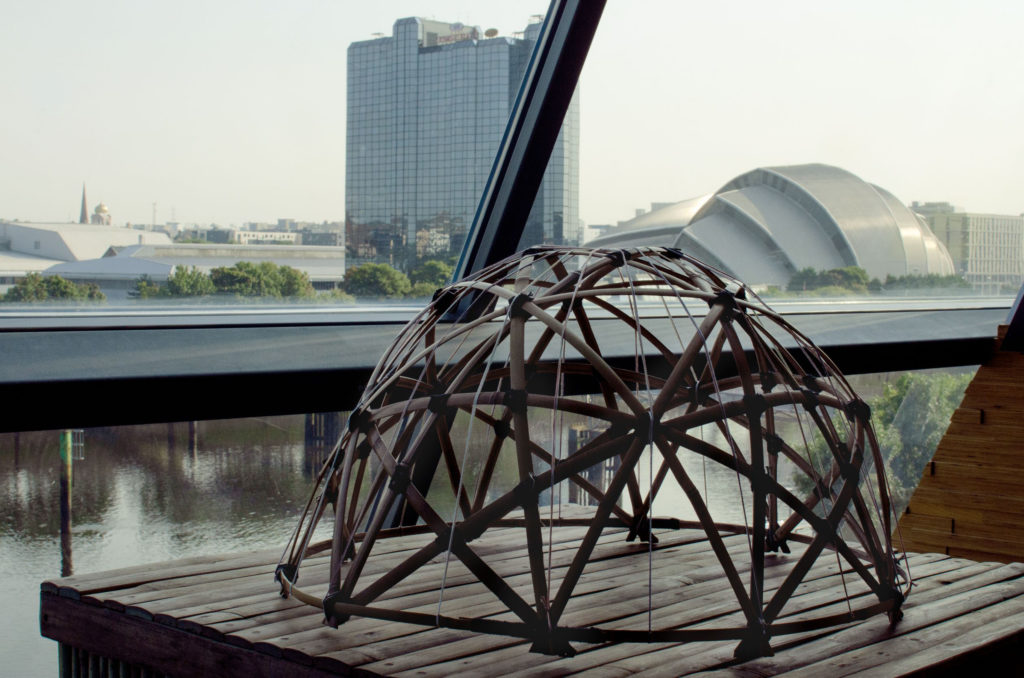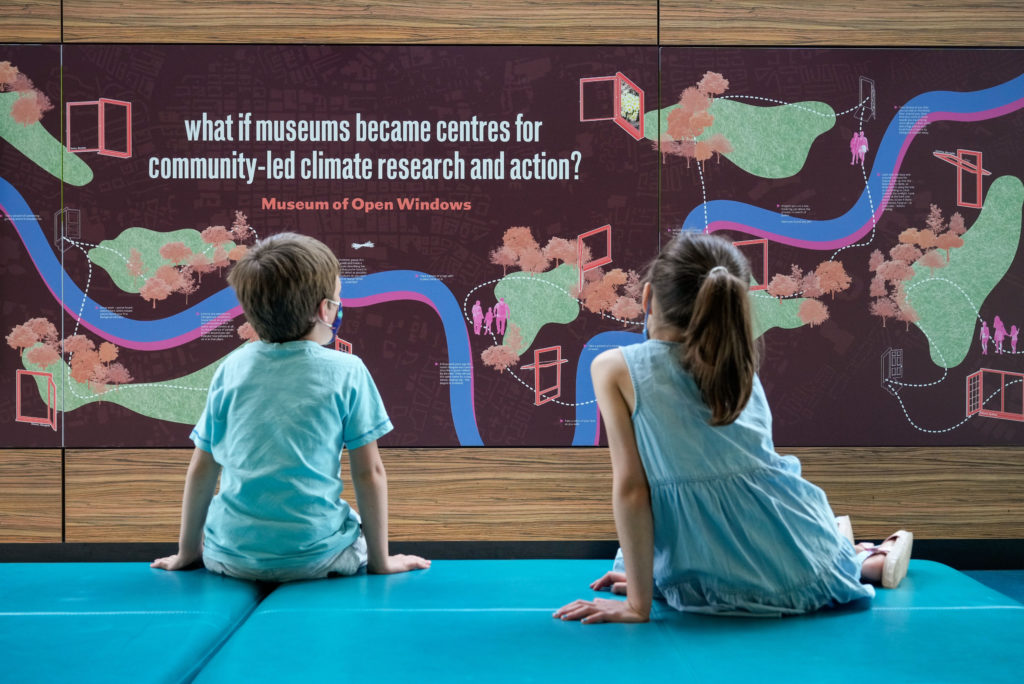
Henry McGhie, Rodney Harrison, Colin Sterling
Curating Tomorrow, UK, and ICOM Working Group on Sustainability; Professor of Heritage Studies, UCL, London; Assistant Professor of Museums and Memory, University of Amsterdam
Museums have no borders,
they have a network
July 28, 2022
Keywords: Climate action; Sustainability; Museums
This year marks the 30th anniversary of the Rio Earth Summit, where representatives of the world’s governments met to address the ongoing degradation of the natural environment. One of the outcomes of that event was the United Nations Framework Convention on Climate Change (UNFCCC), which includes an article (article 6) on the importance of public education, training of staff, public awareness, access to information, public participation and international co-operation to address climate change: six actions that museums are well placed to support. This initiative is now called Action for Climate Empowerment (ACE) and is supported by all UN member states. At COP26, in Glasgow, in 2021, a new programme to support ACE was agreed upon, which will run until 2031. It mentions the key role that museums, cultural and educational institutions have to play in supporting and achieving Action for Climate Empowerment (see McGhie 2022).
How can we connect global challenges, policy agendas, and people’s right to participate in shaping a better future? How can we address the inadequacy of current institutional forms and practices, and where should ideas come from? In 2020, we launched an international design and ideas competition, Reimagining Museums for Climate Action. The project was co-led by Rodney Harrison (UCL, London) and Colin Sterling (University of Amsterdam), in partnership with Curating Tomorrow (Henry McGhie) and Glasgow Science Centre, as the UK Arts and Humanities Research Council Heritage Priority Area contribution to COP26. Reimagining Museums for Climate Action asked people – artists, curators, architects, designers, members of the public and others – to share their ideas on how museums could be reimagined, to create either ‘twists’ on current forms of museums, or to create entirely new ‘shapes’ of museums. The aim was to provide creative opportunities for people to imagine the kinds of institutions that would help them to take climate action.
The design and ideas competition received 264 ideas from 48 countries. Eight of the suggested ideas were selected by an international team of judges, and were then developed into exhibitions that were shown at Glasgow Science Centre before and during COP26. Glasgow Science Centre was the official public face of COP, called the ‘Green Zone’, acting as an interface between international climate policy work, civil society and the public. Around 60,000 people saw the exhibition in Glasgow; it was also featured in Google Arts and Culture as one of five ‘incredible ideas’ from the Green Zone, which also served as a digital format of the exhibition.[1]

Existances project dome model, part of the Reimagining Museums for Climate Action exhibition (2021) © Reimagining Museums for Climate Action / Jonathan Gardner
Eighty-one of the ideas submitted to the competition can be found on the project website; these ideas can serve as a resource for the museum sector and its partners to challenge the sense of what is possible. What if museums were small, impermanent places? What if they were focused on social adaptation to climate change? What if Indigenous territories were a kind of ecomuseum where people could learn about lifestyles closely tied to nature? What if museums were hubs for community-led climate action? The possibilities are endless.

What if museums became centres for community-led climate research and action? (2021) © Stuart Wallace
The project saw the development of other open-access resources to explore how we can rethink the shape and purpose of museums, imagine new museum formats, and mobilise the potential of museums – in current and new forms – to accelerate, amplify and transform climate action everywhere. For instance, an open-access book (Harrison and Sterling 2021) explores the project in more detail and includes interviews with exhibiting teams and a wide variety of practitioners working on climate action in relation to museums. The Mobilising Museums for Climate Action ‘toolbox’ (McGhie 2021) is a collection of practical tools, frameworks, with essential climate knowledge and suggestions that museums and their partners can adopt. The toolbox is organised into short sections to break down the complex and sometimes confusing nature of climate action work. It is available as a PDF and in a web-based version suited for automatic translation, making it accessible in different languages.

Mobilising Museums for Climate Action toolkit, a freely available resource to inspire radical climate action © Museums for Climate Action
The Mobilising Museums for Climate Action toolbox proposes five main approaches for museums to contribute to climate action, which are addressed in the other sections of the toolbox:
Museums must support all of society to reduce its greenhouse gas emissions, rapidly, in line with the Paris Agreement, by encouraging and empowering people to participate in climate action and showing them that they possess the skills to do so, through actions such as producing less waste and making sure anything they do use is renewable. They can foster support for nature conservation efforts that increase nature’s capacity to absorb greenhouse gas emissions.
Museums must aggressively reduce their greenhouse gas emissions across all aspects of their activity, in line with Paris Agreement commitments. They can ensure all staff and all people and organisations in the value chain understand the part they have to play in climate action, and are empowered to take climate action through policies, everyday decisions and procurement practices.
Museums must support all of society to cope with current and projected climate change impacts.
Museums must understand how they will be impacted by climate change, and adapt their practices, location, programmes and collections to be fit for the future.
Museums must ensure that all climate change activities are undertaken in ways that do not themselves disenfranchise people or communities, locally or globally; and recognise that, in tackling climate change, other sustainable development challenges have to be addressed at the same time.
The ICOM Sustainability Resolution established at the ICOM General Conference in Kyoto, in 2019, is a strong mandate for climate action. The new programme to support Action for Climate Empowerment is a readymade framework that museums can start using to make the Sustainability Resolution a reality. We hope the resources from Reimagining Museums for Climate Action will support museums and museum workers everywhere in developing their skills and confidence to join in this work, for the benefit of current and future generations, and for the future of museums.
References and resources
Museums for Climate Action, https://www.museumsforclimateaction.org/
Harrison, R. and C. Sterling (eds.) (2021). Reimagining Museums for Climate Action. Museums for Climate Action, available at https://www.museumsforclimateaction.org/mobilise/book
ICOM (2019). Resolution No.1 ‘On sustainability and the adoption of Agenda 2030, Transforming our World’. Paris: ICOM. Available at: https://icom.museum/wp-content/uploads/2019/09/Resolutions_2019_EN.pdf
McGhie, H. (2021). Mobilising Museums for Climate Action. Museums for Climate Action, available at https://www.museumsforclimateaction.org/mobilise/toolbox
McGhie, H. (2022). Action for Climate Empowerment, a guide for galleries, libraries, archives and museums. Curating Tomorrow, available at https://curatingtomorrow236646048.files.wordpress.com/2022/03/action-for-climate-empowerment-curating-tomorrow-2022.pdf